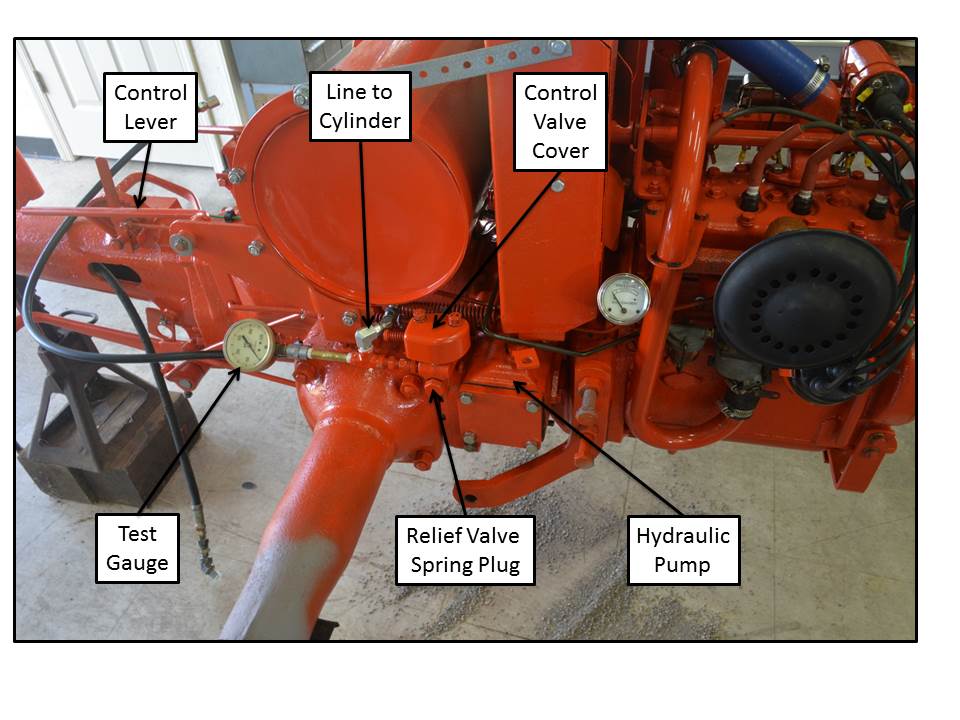I had one
that threw me for a loop this week. I have been rebuilding a 1949 AC Model G. The
cleanup was going fine until I got around to connecting up the hydraulics. The
Model G has front and rear cylinders for lifting equipment. The rear cylinder
has a spring return and a needle valve to adjust the timing between the two. The
operator can adjust the needle valve to delay the lifting of the rear
cultivator at the row end so the front would be out of the ground when the rear
finishes the row.
After I cleaned and reassembled the
pump, I remounted it and connected the rear cylinder to test the system. I
started the tractor and the hydraulic cylinder wouldn’t move. It had a problem:
the system would only reach about 100 PSIG. The pump bypass relief valve consists
of a spring that pushes on a ball bearing that seals the pump output from the
return sump. When the system pressure exceeds about 900 PSIG, the valve opens
and bypasses the fluid to the sump to keep the system from over pressurizing. I
made new valve parts because it seemed like the relief valve was opening too
soon and not allowing the pump pressure to reach the required 900 PSIG. After
the 5th or 6th pump removal, I decided to replace the
spring and ball with a machined rod that would seal the bypass to determine
what the ultimate pump pressure would be. I was astonished to find the pump
only produced the same 100 PSIG. That drove me nuts until I happened to spy the
problem: the G has a latch on the clutch pedal to keep the clutch plates from
sticking together during periods of inactivity. I haven’t adjusted the clutch
yet because the tractor is on stands. I hooked the clutch rod up and set the
adjustment midpoint and assumed I would adjust it when it came time to mount
the wheels. As luck would have it, the clutch was just barely engaged when the
latch was used. The amount of engagement was just enough to reach 100 PSIG
before slipping. Had I turned the clutch nut 1 turn more or less, the problem
would have been obvious from the start.











 Topic Options
Topic Options


 Post Options
Post Options Thanks(0)
Thanks(0)






